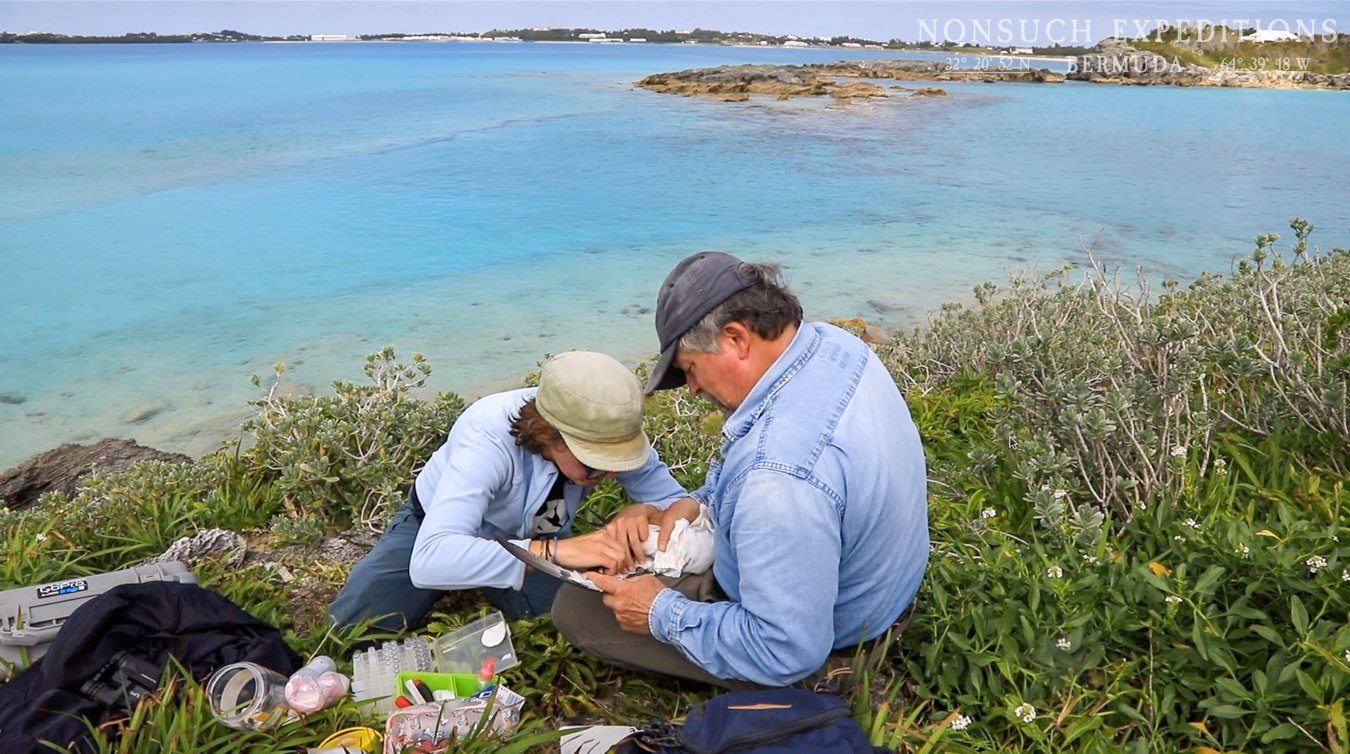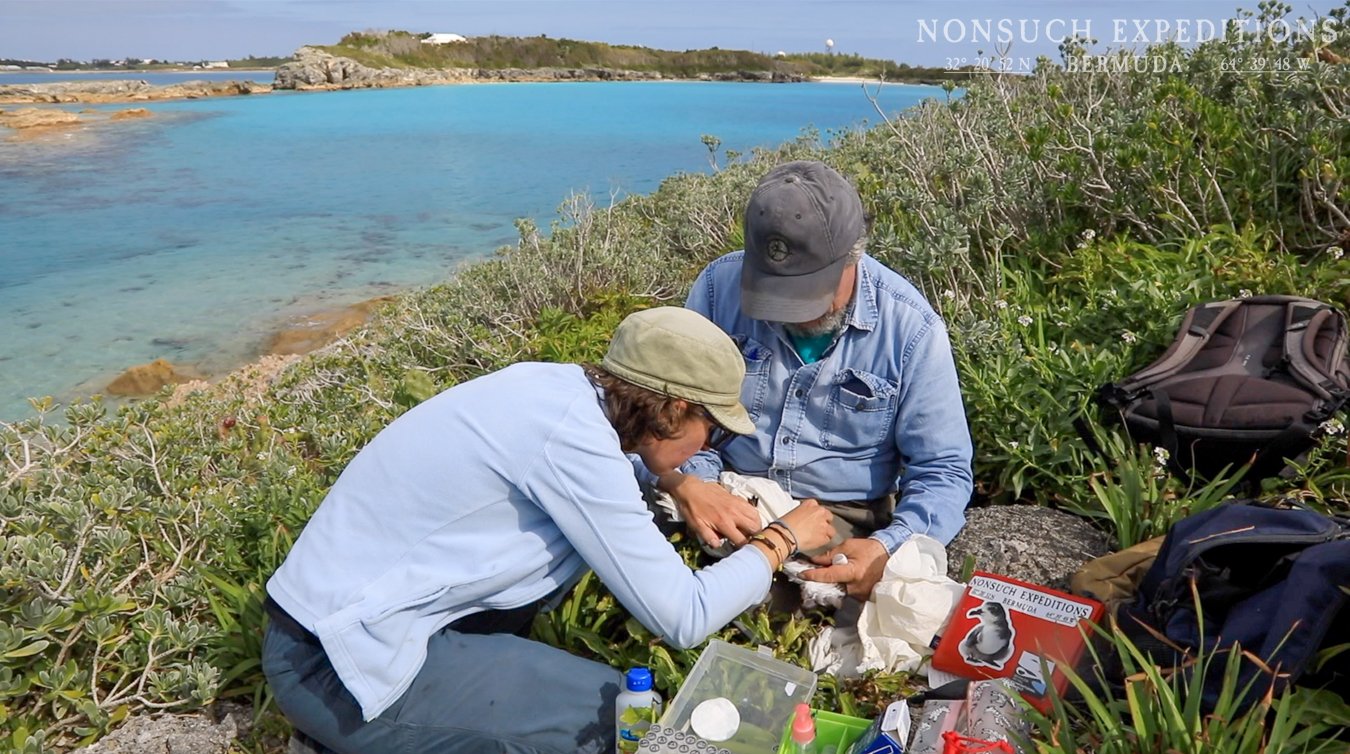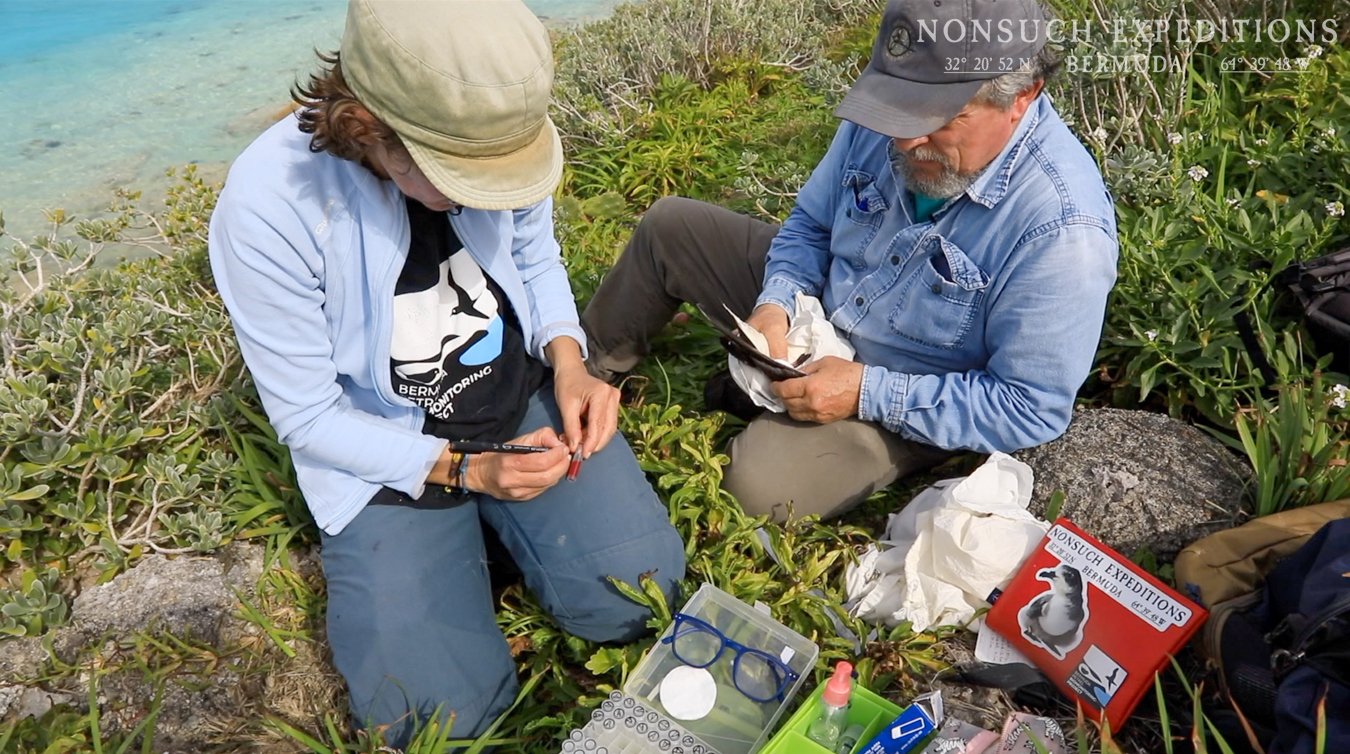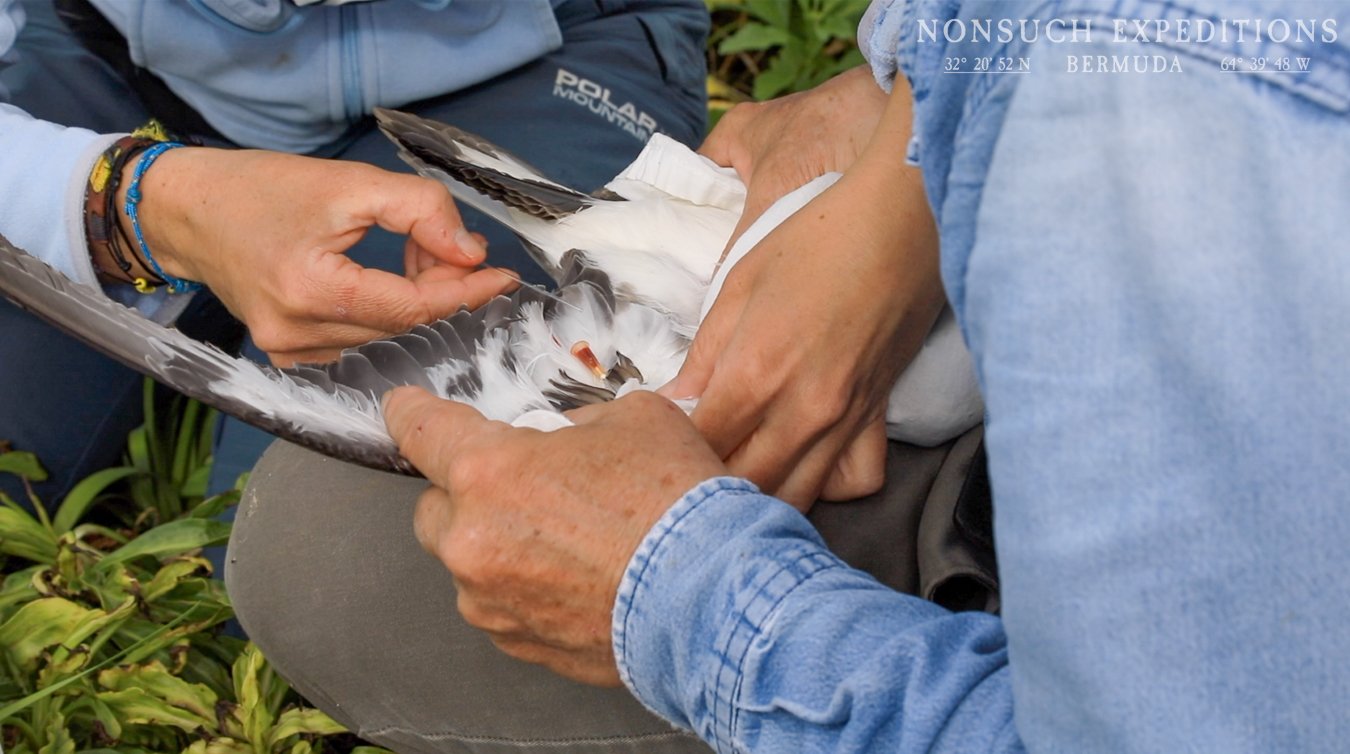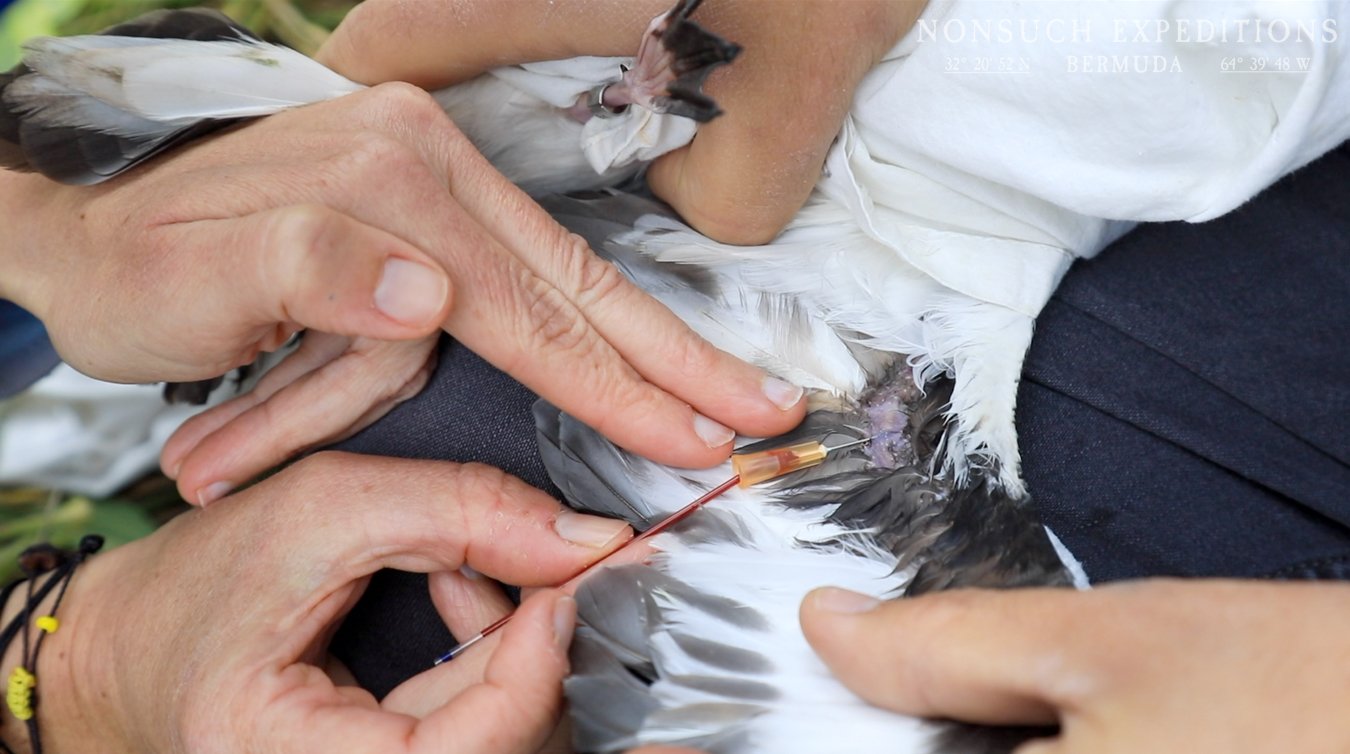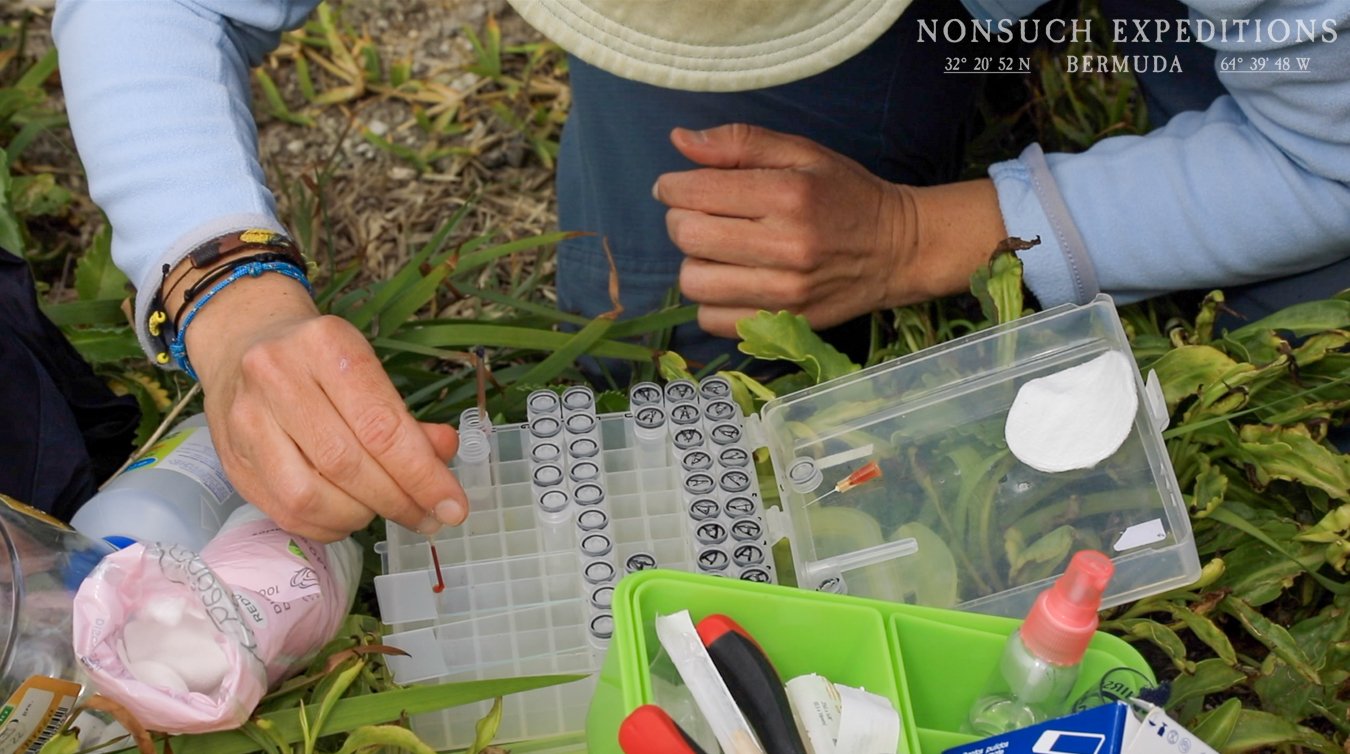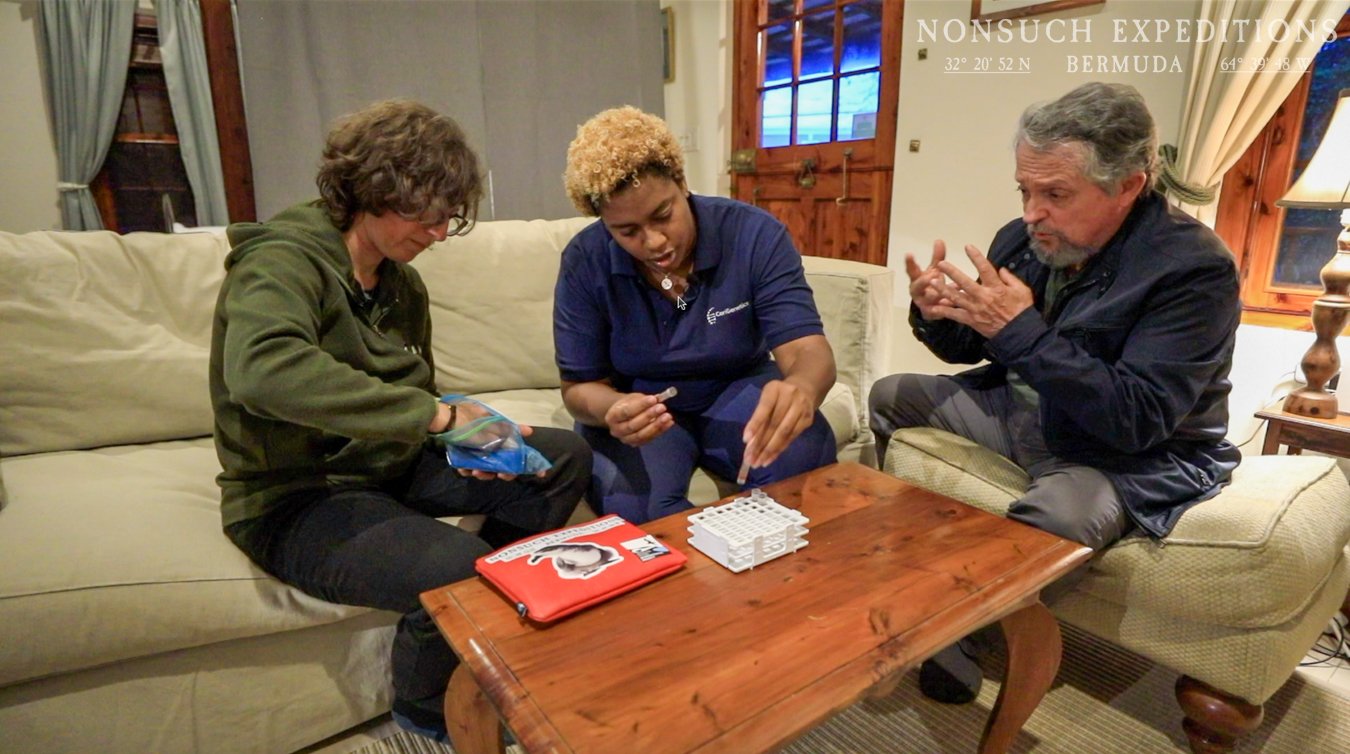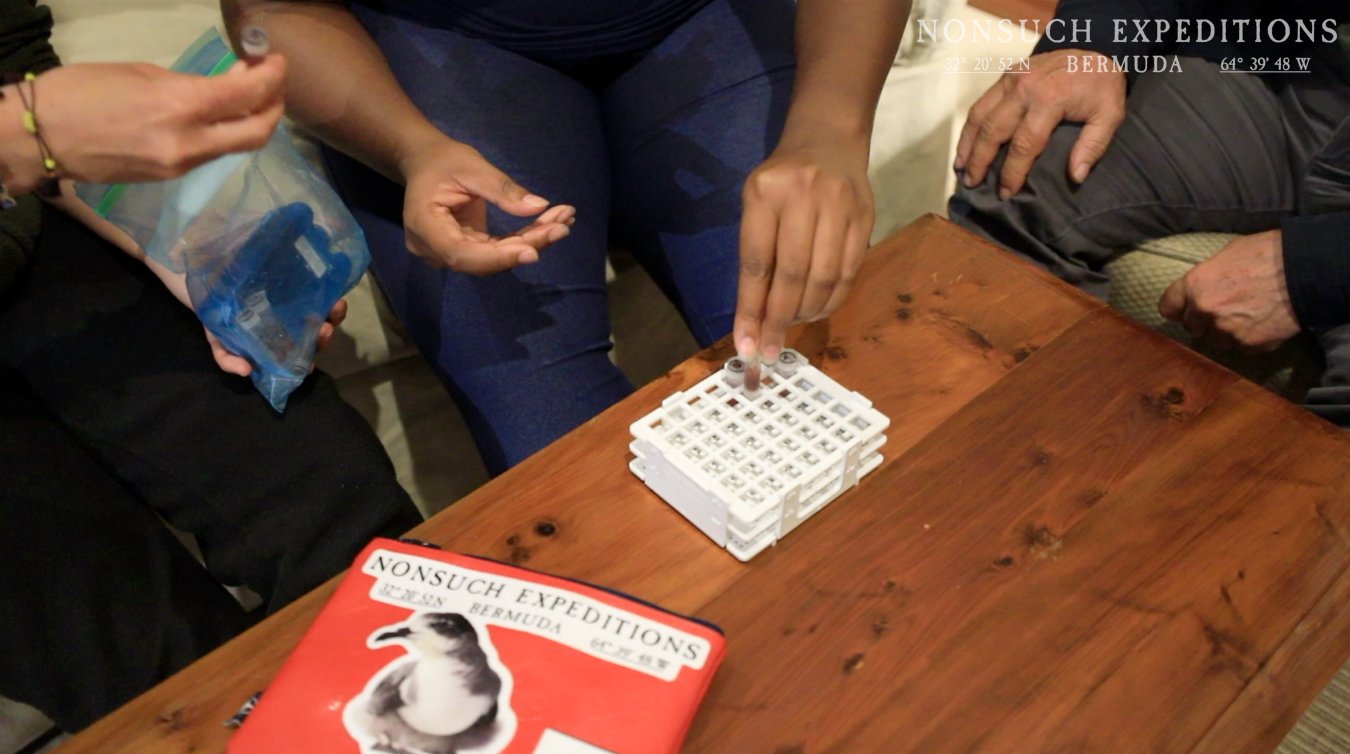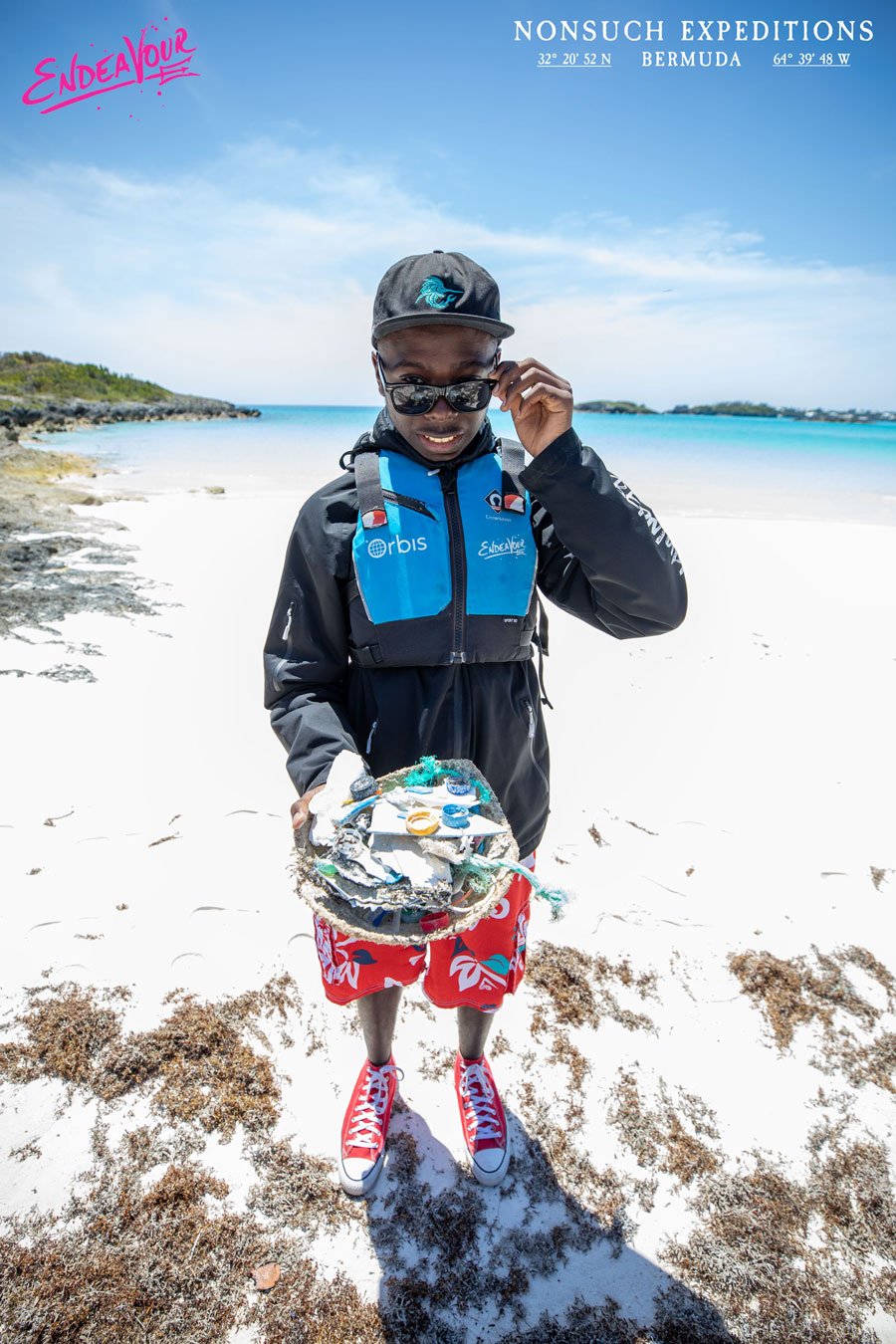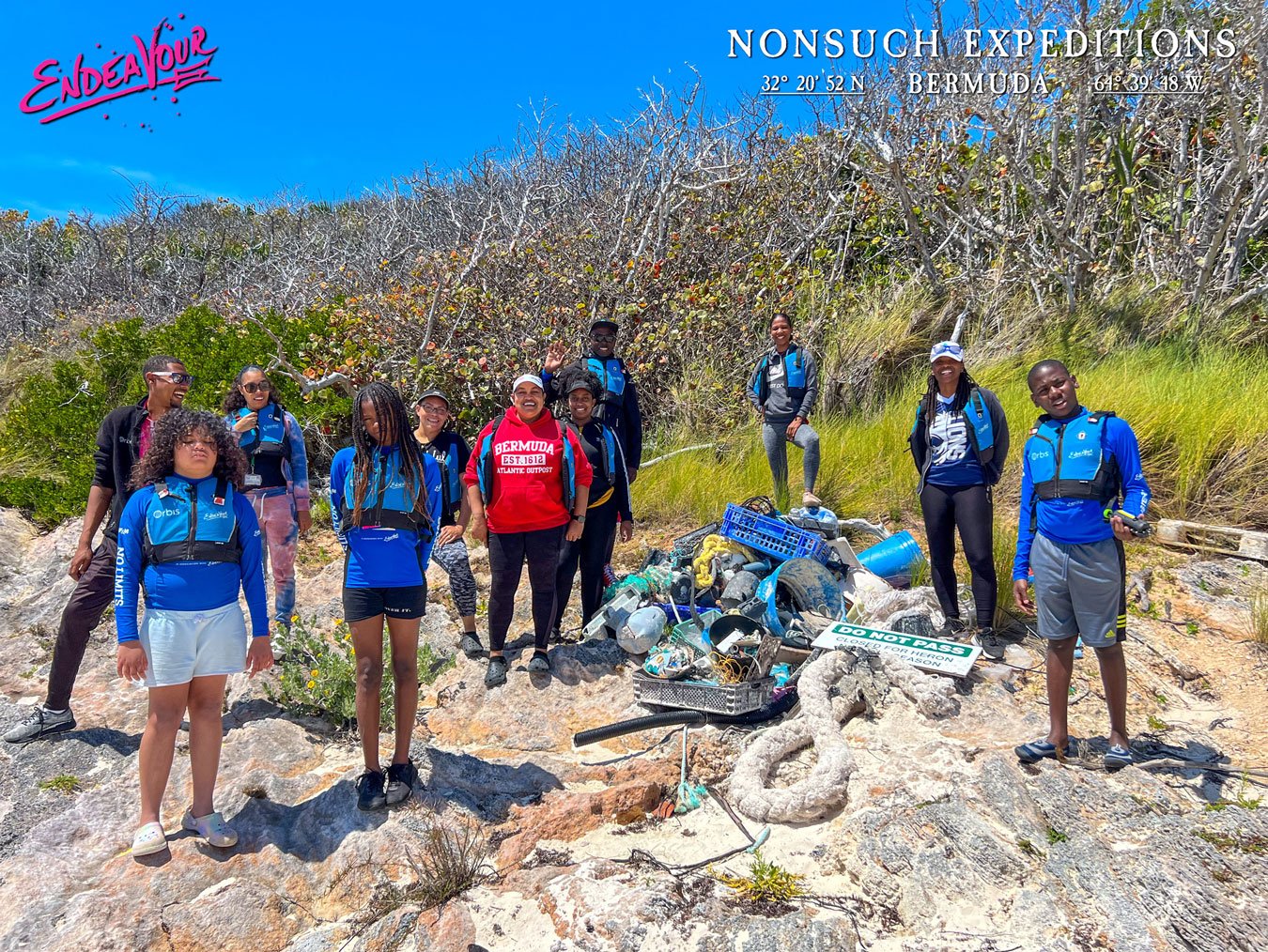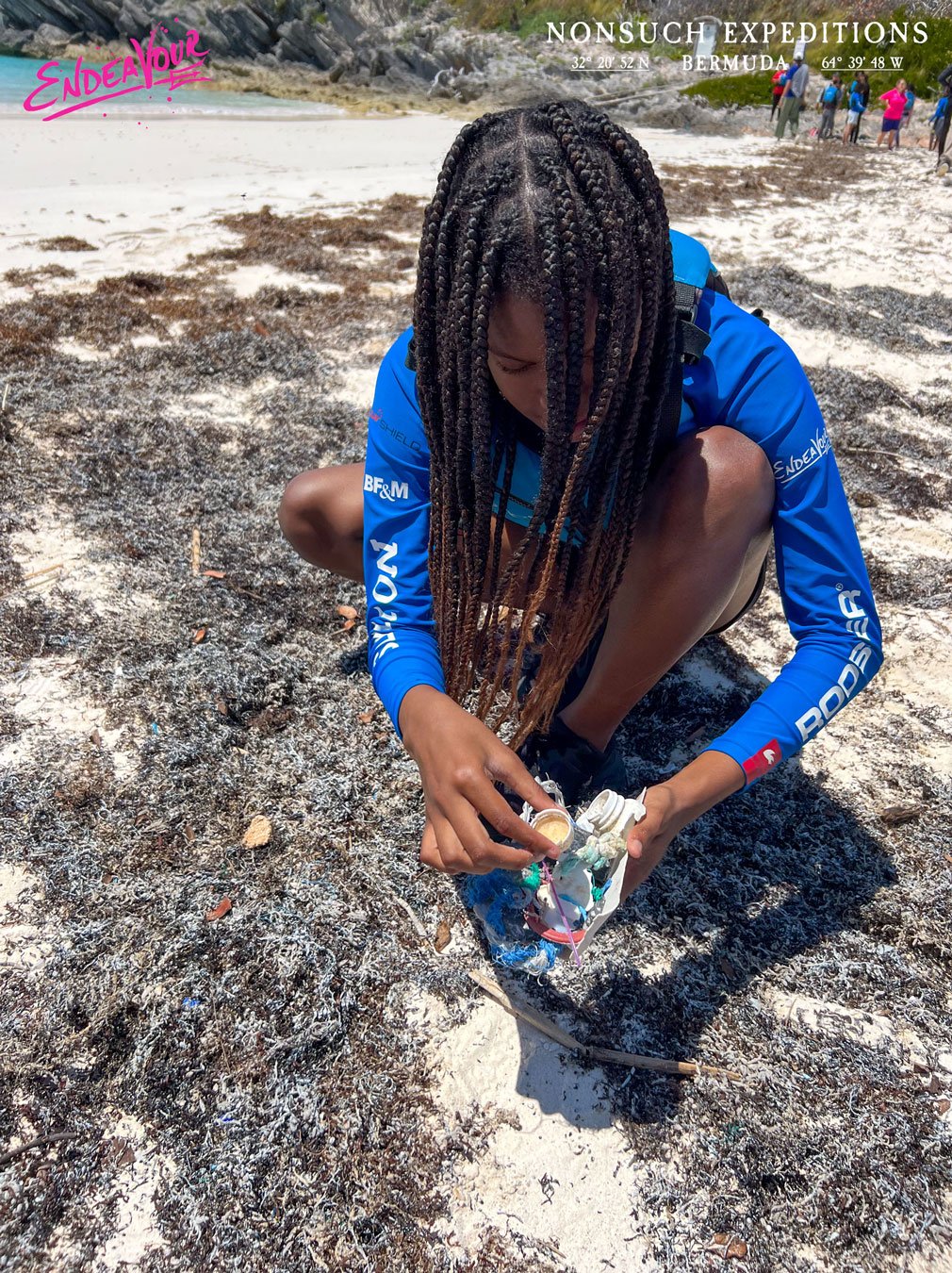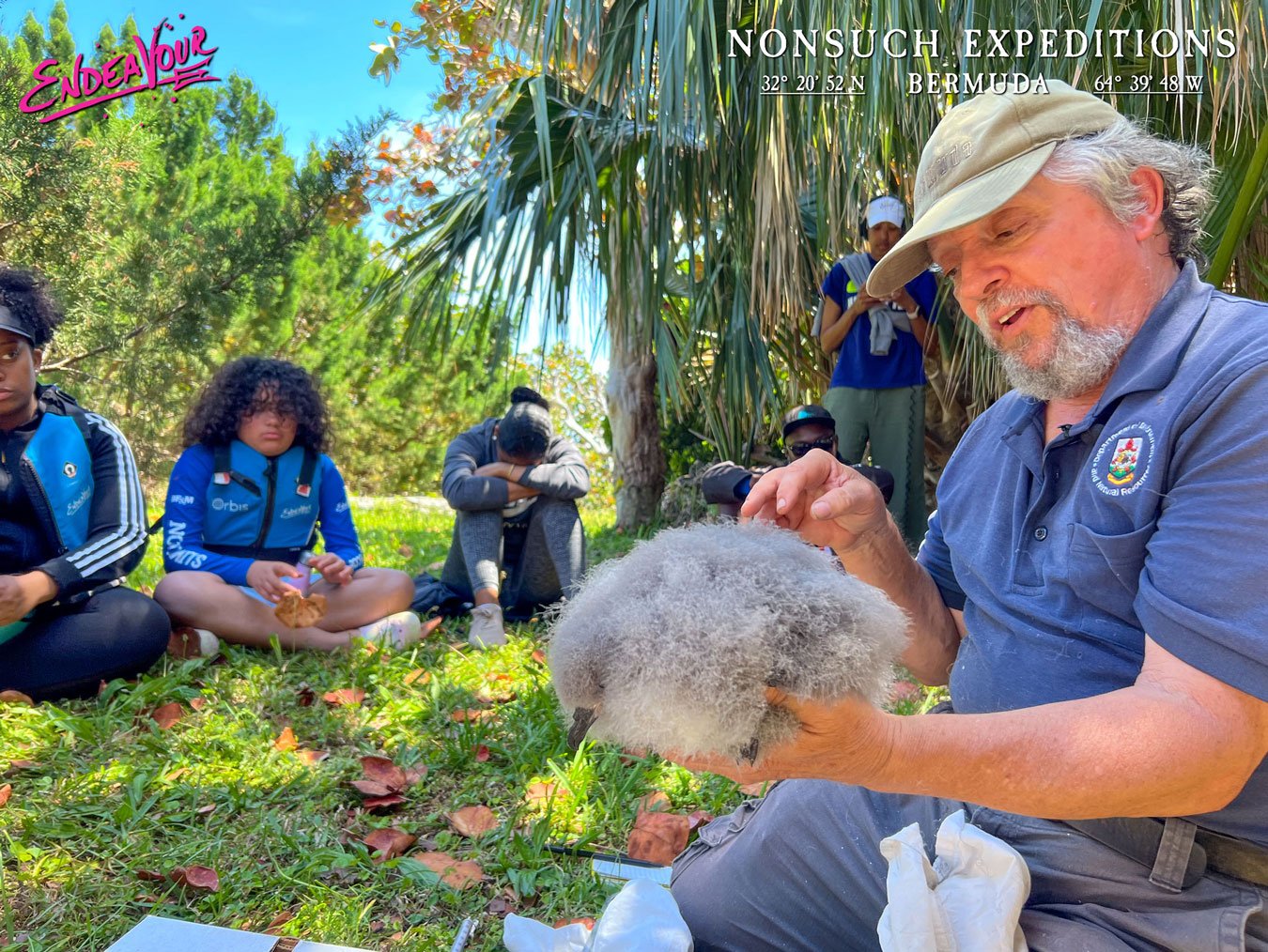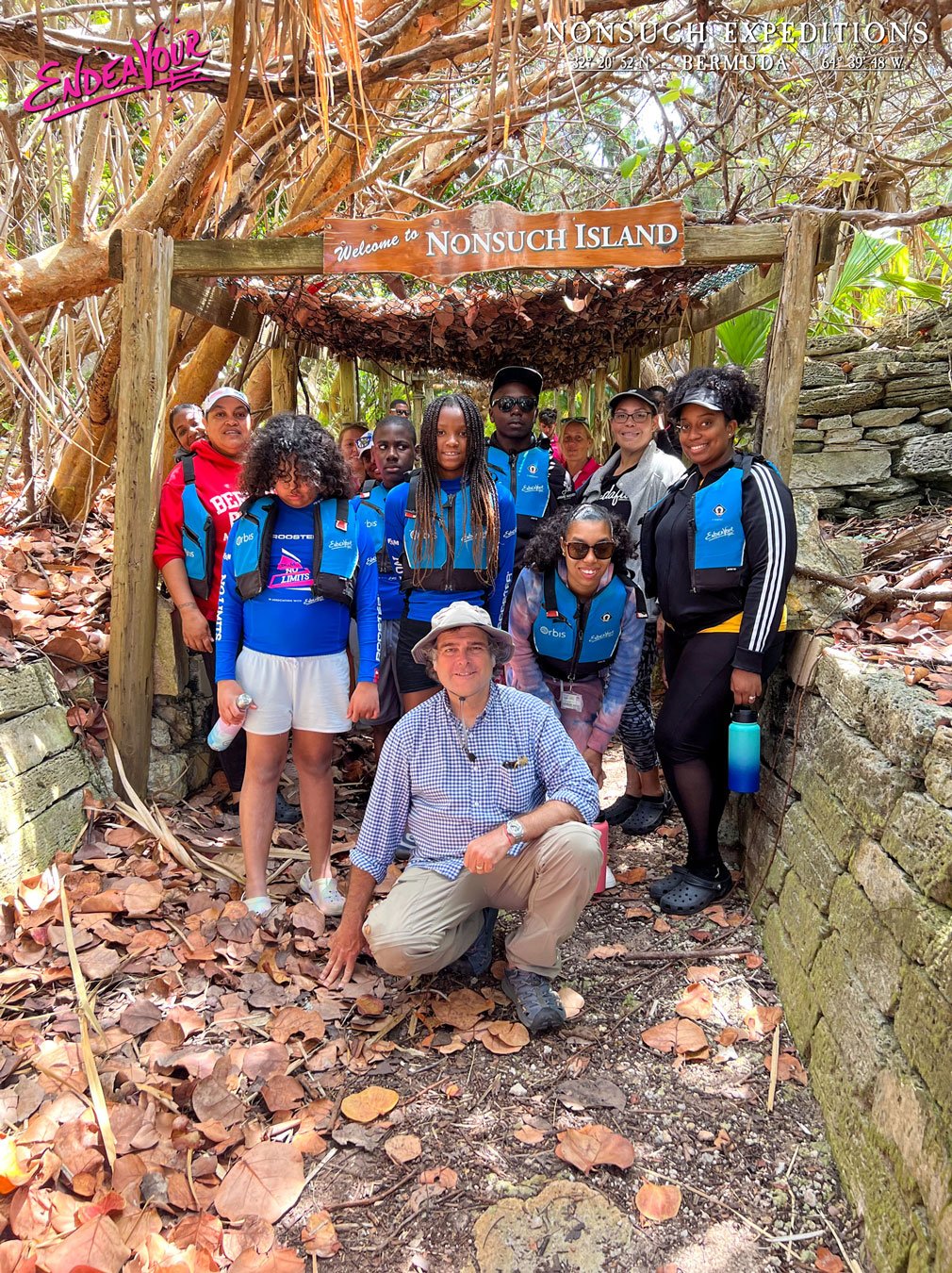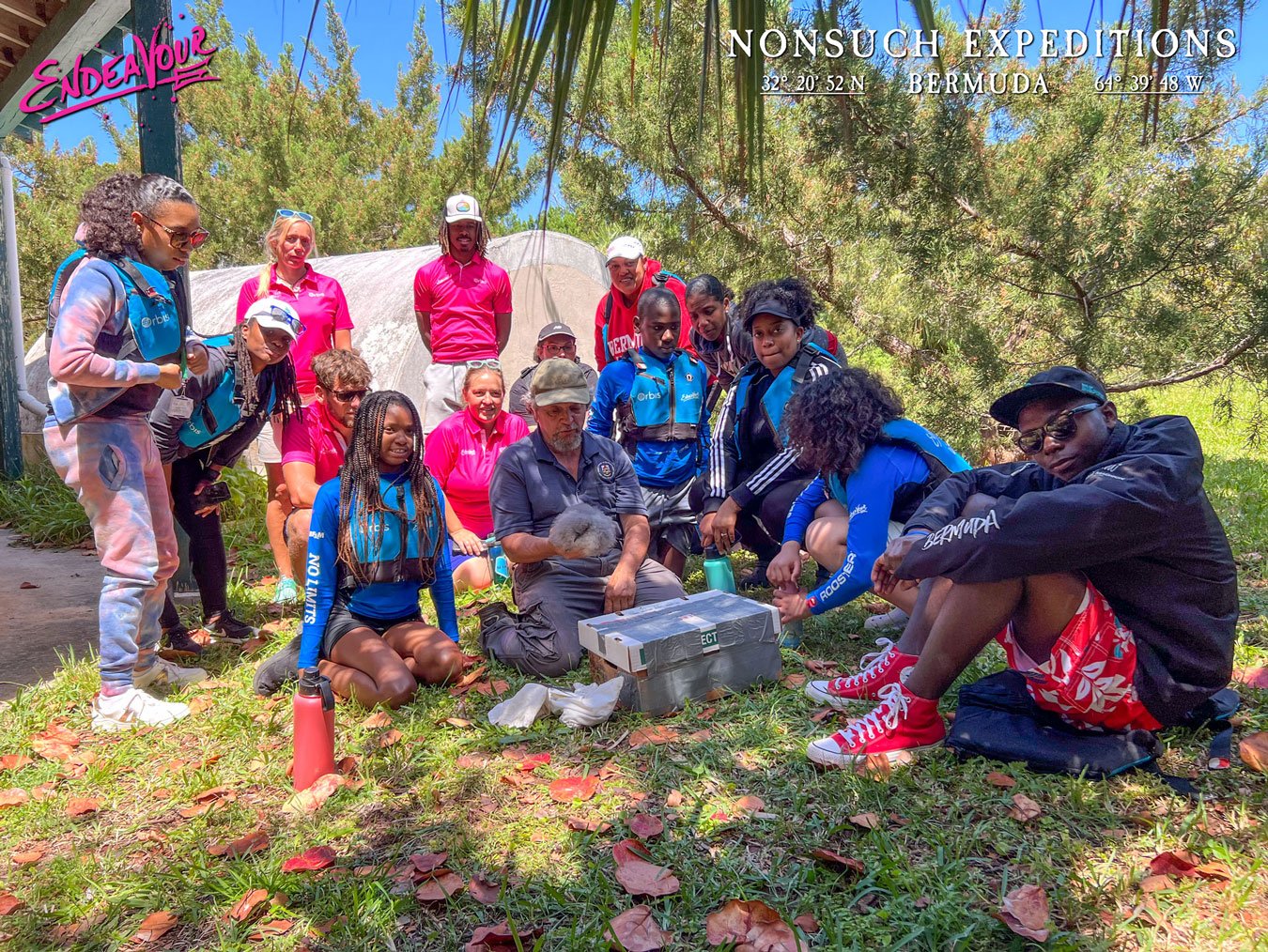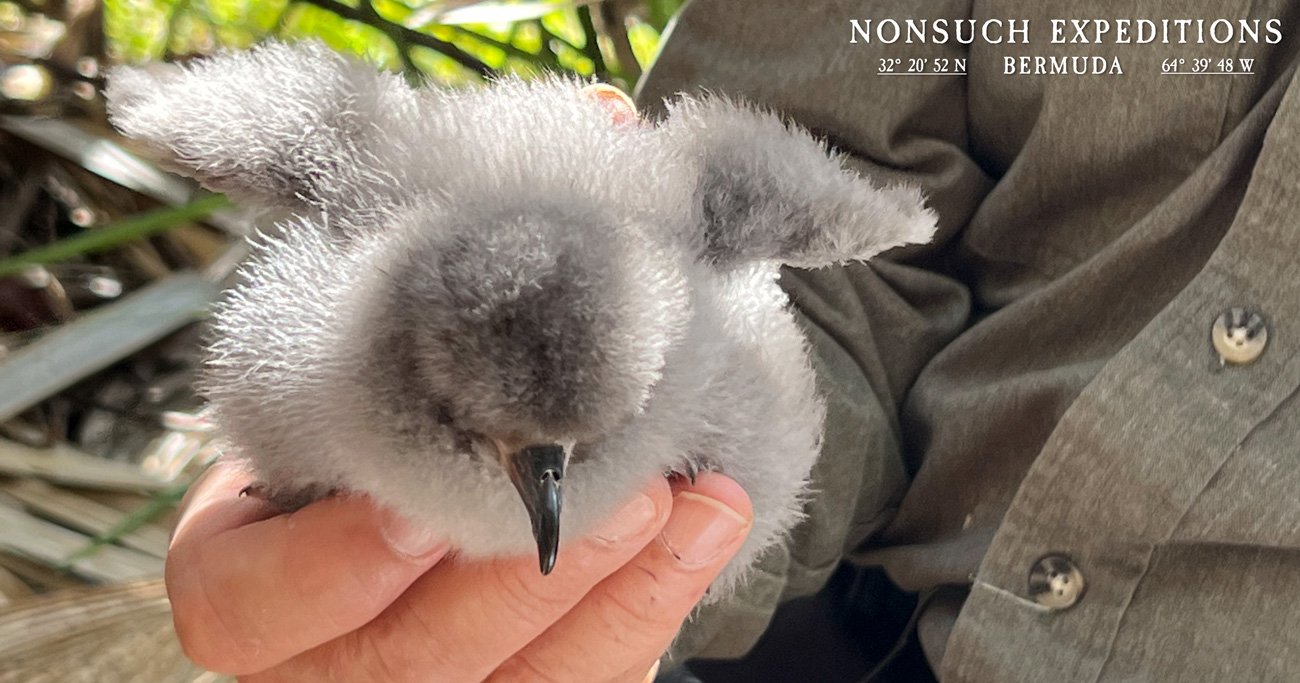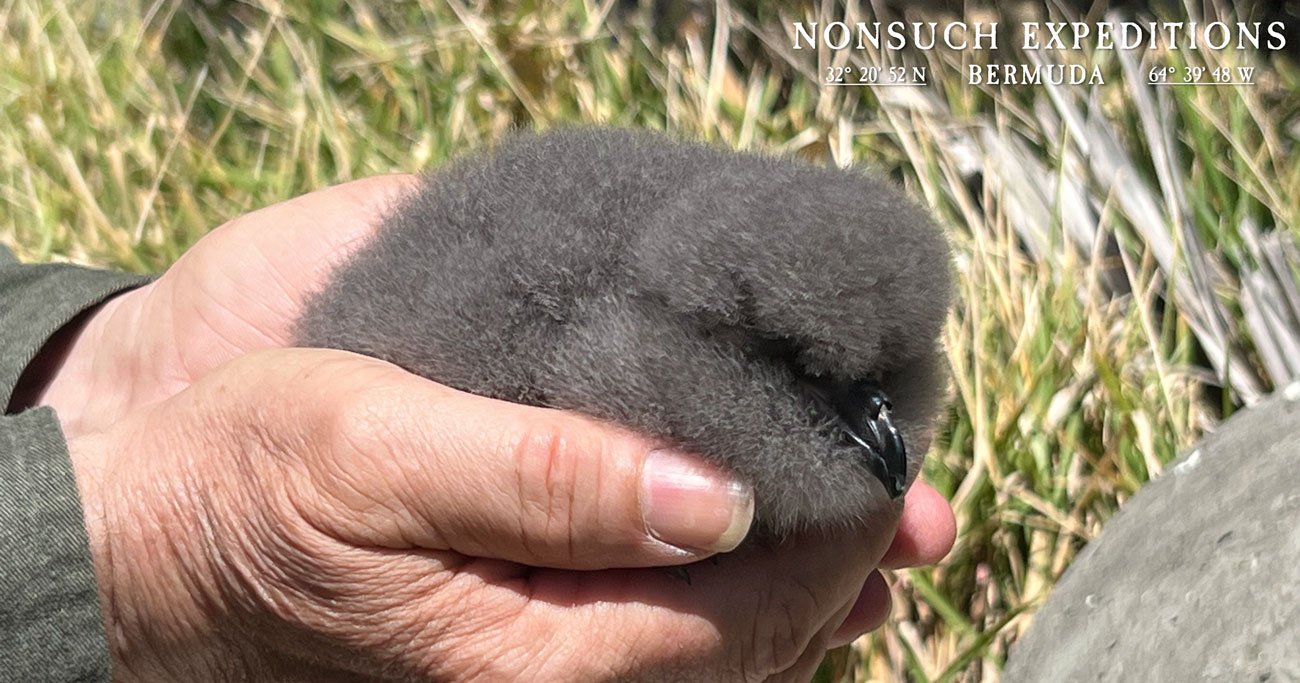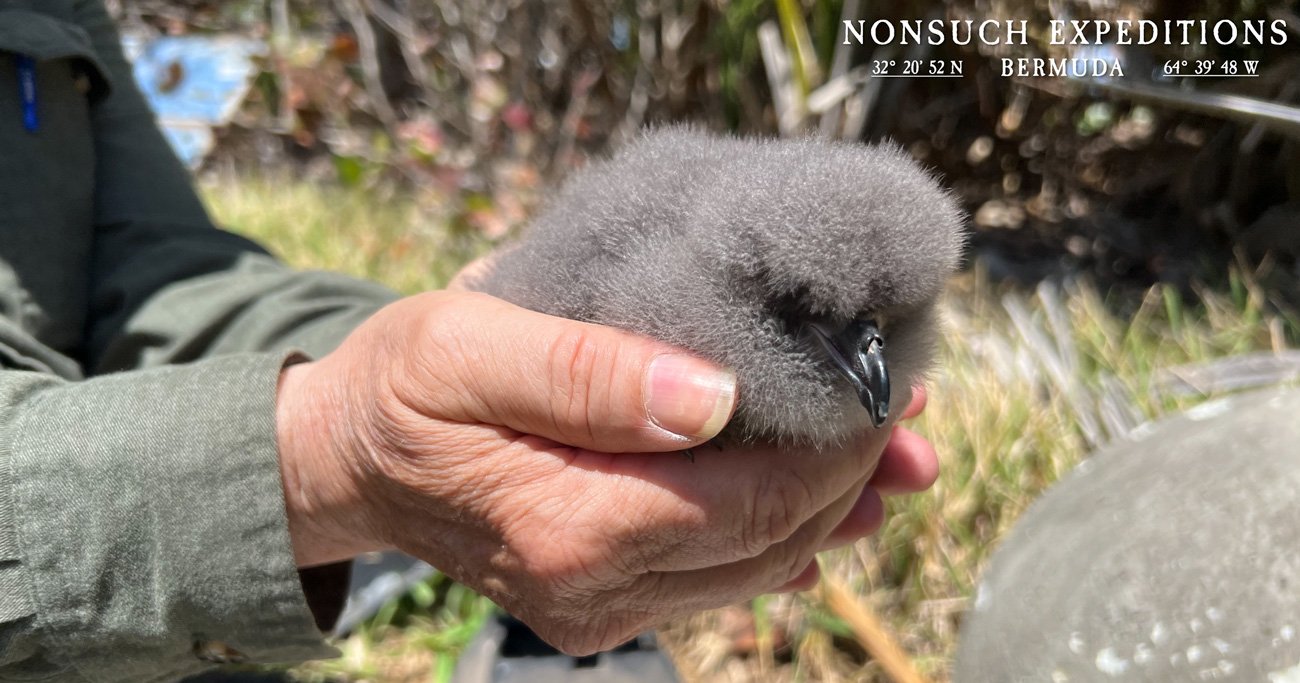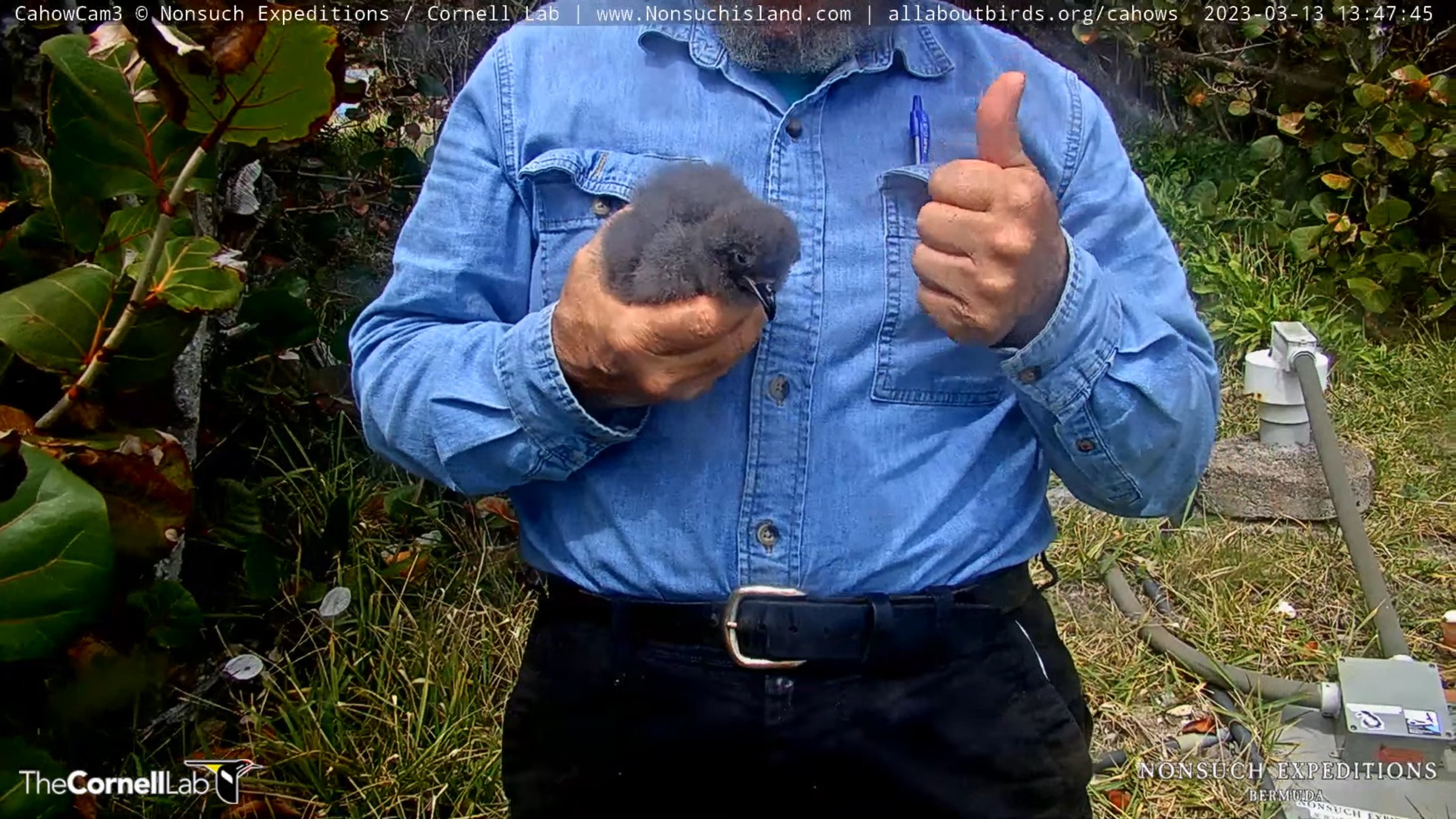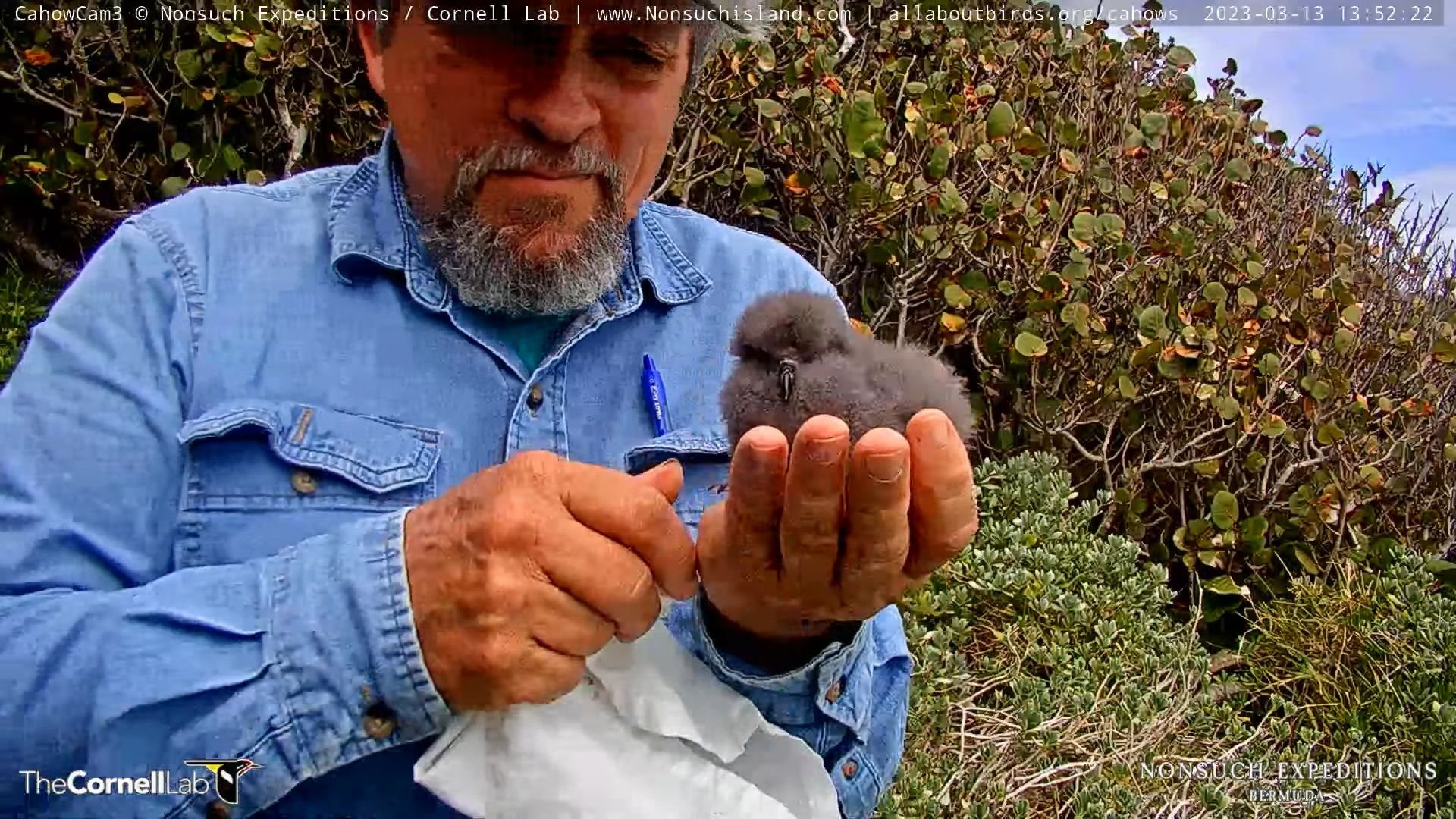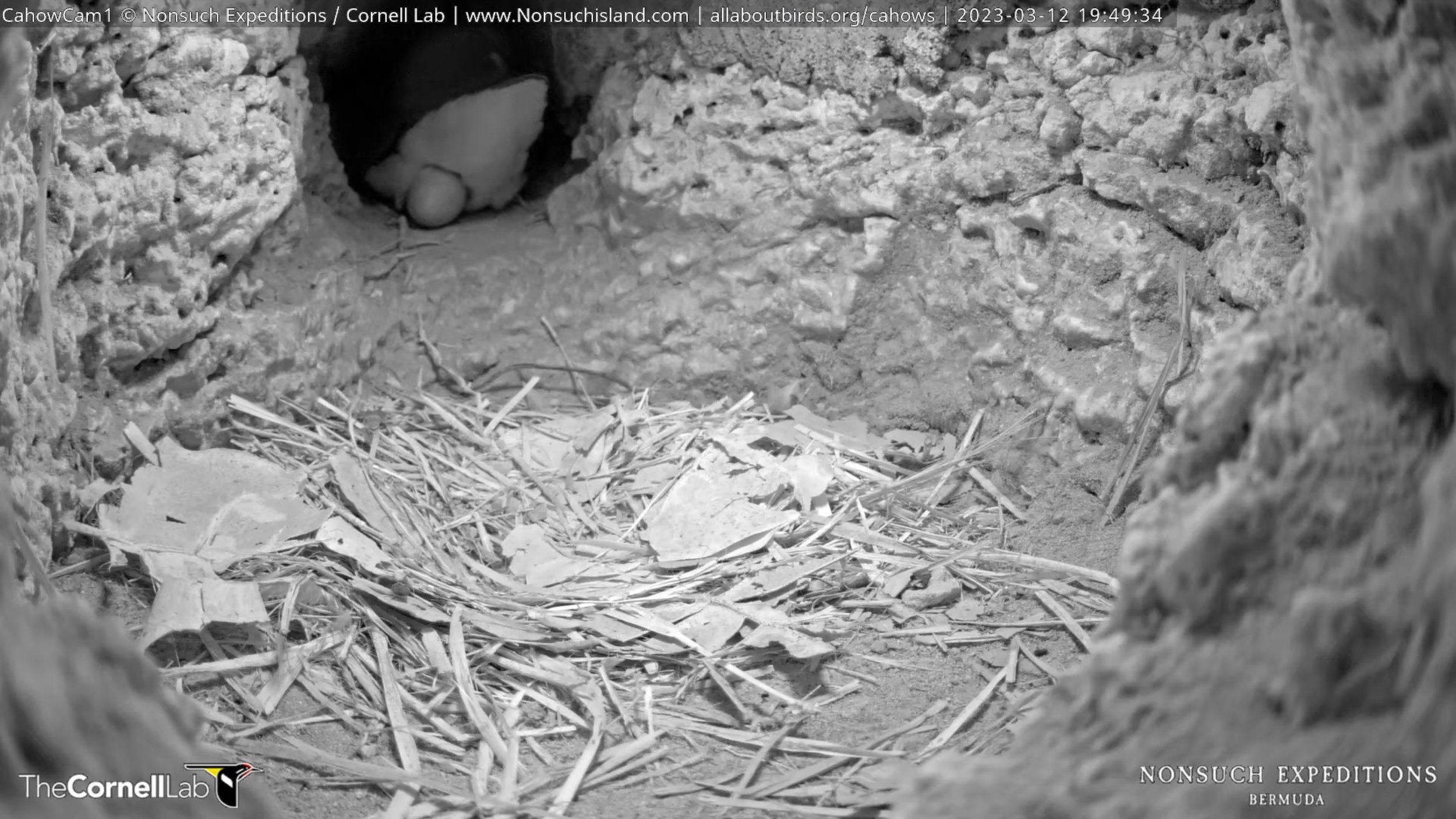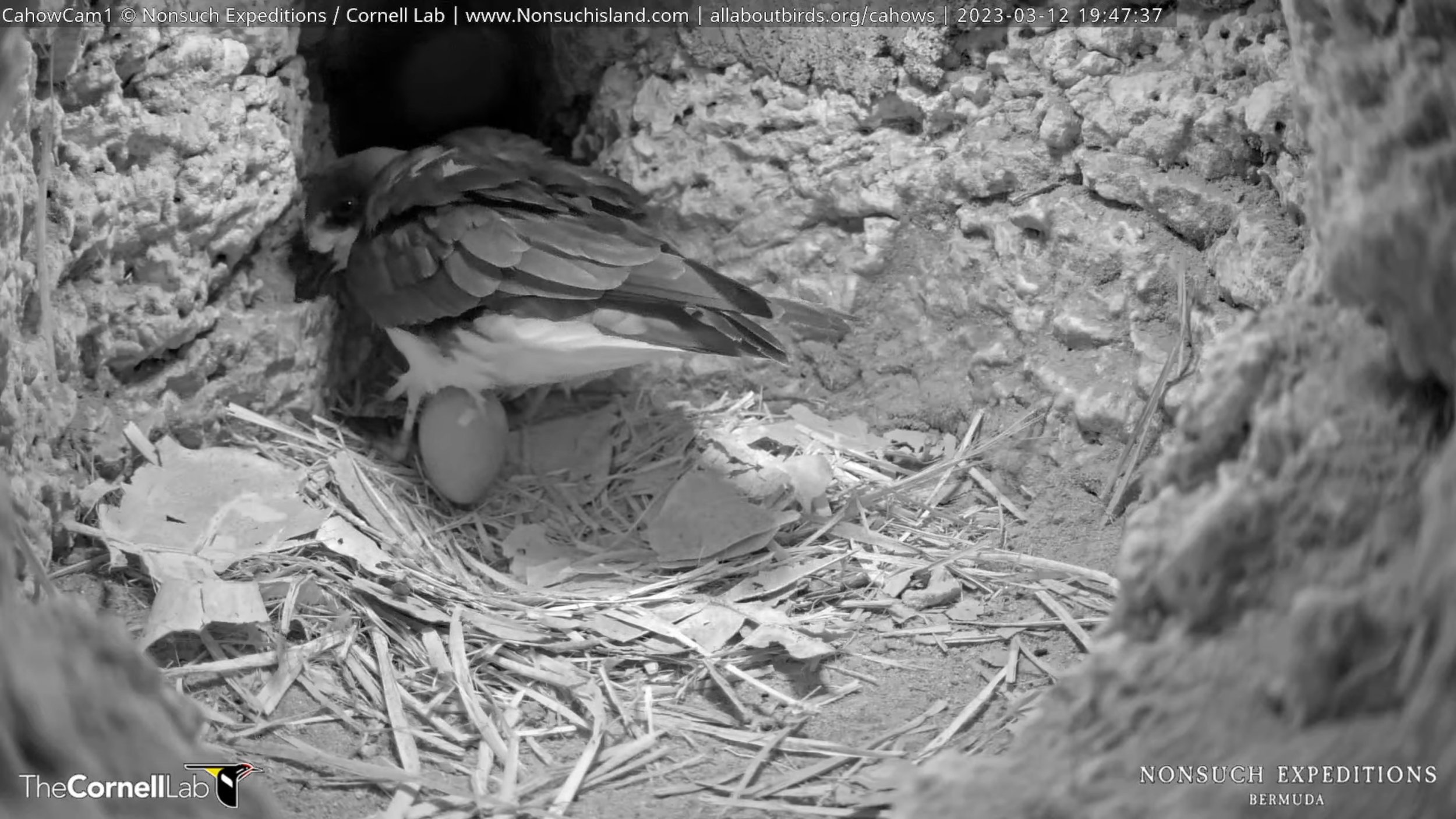“As of Jan 23rd, essentially all Cahows have returned from their pre-egg laying exodus and have laid their eggs in their underground nest burrows on the half-dozen small islands in the Castle Harbour area, with the exception of a couple of nests where the male birds have returned but are still waiting for the return of their mates.
For the two "CahowCam" nest burrows on Nonsuch, which are fitted with infrared live-stream video cameras, there is mixed news:
In "CahowCam 1" (the R832 nest burrow), the Female returned at 11.05pm on the night of the 6th of January 2024, laying its egg an hour later at 12.05am on the 7th of January. The male bird in this highly synchronized pair returned less than 2 hours later by 1.49 am. This pair laid an unusually large egg, weighing 62 grams and measuring 62.7mm by 42.54mm. It first showed signs of fertility on 12th January, which was confirmed by the 15th of January. At the last check on 23rd January, the embryo appeared to be developing normally. This Cahow pair, consisting of the male (band no. E0197) and female (band no. E0212), started nesting together in 2010, and in 14 years have produced 7 successfully fledging chicks.
In the "CahowCam 2 (R832 nest burrow), it has been a sadder story as the male bird (band no. E0174) appears to have lost his long-term partner and mate (band no. E0172). This pair, which also started nesting together in 2010, has been one of the more successful nesting pairs that I have monitored over an extended period of time, produced an amazing 12 successfully fledged chicks in 14 years of nesting together (several of which have been confirmed as already returning and establishing new nests on Nonsuch and Long Rock). The female had already shown herself to be a resilient bird, suffering a severe foot injury in 2019 which healed enough for her to raise another 3 chicks, but it appears that something happened to her at sea between June and October 2023.
It is always sad to lose a member of a successful pair. I had translocated all 4 of the birds that ended up settling in the 2 CahowCam nests in 2005 and 2006, from the 4 tiny original nesting islets as near-fledged chicks to artificial nests on Nonsuch (included in the 100+ chicks from the 1st Translocation Program that I initiated after taking over as Warden). As part of the Program, I then hand-fed them for 2 to 3 weeks, and allowed them to imprint on and fledge from their new "adopted" home on Nonsuch, to which 51 eventually returned and paired up 4 to 5 years later (including these 4) in artificial nests usually right next to the ones they originally fledged from.
Despite the ongoing Live-Streaming connectivity challenges that are out of our control (ISP and shore-based receiver issues which are being addressed by Nonsuch Expeditions founder and CahowCam developer Jean-Pierre Rouja), the cameras are still archivaly recording on the island which allowed us this past November to observe as the Cam2 male waited in vain for his mate to return. As it became obvious that she was not returning, another young female Cahow (band no. E0643), which had fledged as a chick from the C19 nest on nearby Horn Rock and was obviously looking for an eligible bachelor male, started visiting the male in his burrow on the 9th November. Despite originally aggressively spurning her advances, he eventually accepted her and they were seen to be mating and resting together in the nest. The male returned in mid-January, and as of the writing of this update was still waiting for the return of his (hopefully) new mate.
Overall, at the Nonsuch nesting colonies, Cahows have returned to all 39 of the active nest burrows on Nonsuch Island, up from the first pair of returned translocated birds in 2009. This was the first time that Cahows had nested on Nonsuch since they were wiped out there in the 1620s through hunting by the early colonists and introduced mammal predators, now eliminated on Nonsuch. With the help of Carla Marquardt, who has experience with the candling of eggs to determine fertility and the rate of development of the embryos, we have been able to determine that out of these 39 nests, as of the 23rd January 2 had males still waiting for the return of their mates, 2 had confirmed failed eggs/nesting, 25 had confirmed fertile eggs being incubated with developing embryos, and 10 had eggs that were either too recently laid to detect a viable embryo yet (it takes 4 to 5 days after laying before the embryo can be detected), or were probably infertile.
In between a near-continual barrage of strong winds and rough sea conditions since the beginning of the year, I have also been able to visit two of the other nesting islands in the last couple of weeks to determine which nests there also contain fertile eggs and which have failed. Once I have had a chance to visit all nesting islands, I will have a good idea of just how many fertile eggs there are in the whole breeding population, and we will be duly reporting these numbers in a future update.”
Jeremy Madeiros | Senior Terrestrial Conservation Officer














